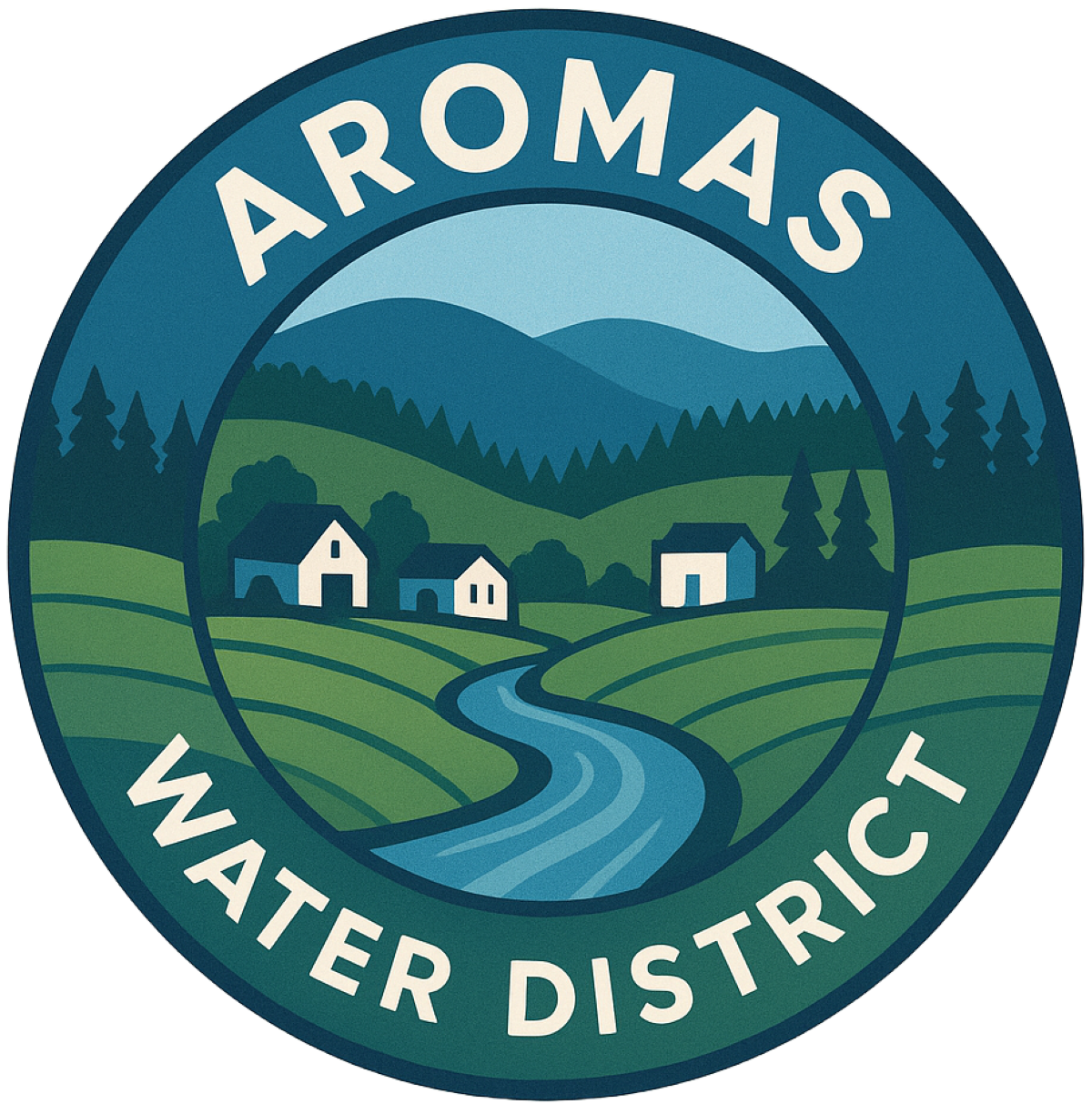FAQs about water color
One of the more common complaints received by systems of our size is “discolored water”. This section explains why discolored water is normal; why the water is still safe; and how the District investigates whether the cause is in our water mains or in the customer's private lines. Some tips are included to deal with color problems.
My water is white, is this safe to drink?
Occasionally customers run a glass of water from the faucet and it is white; this is simply microbubbles of air. Leave the glass of water on the counter for a minute and you will see the water return to clear as the bubbles rise and dissipate.
What causes the water to be discolored (brown or yellowish)?
In general there are two causes of discoloration. (1) either it is coming from the customer's private water lines, or (2) it is coming from the District's water mains. So investigating the location of the problem is key.
Investigating a color complaint. Whenever we receive a complaint about discolored water we will first check if there are other customer's nearby with the same problem. If it is just one customer then the problem is likely in the customer's private water lines. We can physically confirm this by pulling out the water meter and checking the water color coming from our mains before it gets to the customer's pipes. If the water is clear at the meter then the problem is in the private lines.
- The top three reasons water becomes discolored in a customer's private lines are: (1) the customer's plumbing is made of galvanized (steel) pipes which are rusting on the inside. (2) the customer's hot water heater is rusting, or has not been flushed for several months, and (3) naturally occurring sediment, iron and manganese has built up in the customer's lines and it was stirred up by heavy usage in or around the home. While we cannot work on a customer's private water lines, we can often offer tips to help diagnose where the problem may be. More information can be found on our "Tips for Private Plumbing" page.
-
Water can also become discolored in the District's water mains. This can happen when heavy usage in an area stirs up naturally occurring sediment, iron and manganese in the District's lines. The water in our system comes from groundwater wells which pull in water at hundreds of gallons per minute, so some sediment (fine-grained mud/clay) will also get pulled into the system. This is true for any system using groundwater wells.
Naturally occurring iron and manganese is also in the our local groundwater. Once in the system most of it is filtered out or settles in the bottom of our ten storage tanks. The tanks are regularly cleaned, however, some sediment/iron/manganese still makes it into in the water mains and then into the customer's private water lines. Most of the time the water in our mains moves so slow that the particles settle onto the inside lining of the mains. The particles will sit in the mains until high water use causes the water to flow so fast that it stirs up the particles. When this happens many customers in the same area can have discolored water. Examples of this are: when the Fire Department fills equipment or tests a fire hydrant; or when someone nearby fills a pool/pond or irrigates a large pasture, etc.
OK, but is it safe to drink?
Yes, it is safe. All the sediment or iron/manganese has been continuously disinfected by chlorine, and there is always a minimal amount of chlorine kept in the system at all times. Consuming water with iron and manganese does not have any health impacts. So while the water may be discolored it is still safe to use or drink.
But what if I still don't want to drink it?
It is natural that users do not want to drink discolored water, so here are a few options:
- You can fill a clear container and allow the water to settle/clear and then use the water off the top of the container
- You can use a simple filter at your drinking water tap (reverse osmosis is not necessary)
- You can flush the discolored water from the house. The location to flush will vary depending on how your plumbing is connected. Typical flushing tips are to fill an upstairs bathtub (with cold water) and to open an outside faucet on the far side of the house.
- If the colored water came from the District's water mains and you need to flush it out of your home, simply call us at 726-3155 and we will gladly apply a "flushing credit" to your account on the next monthly bill.
